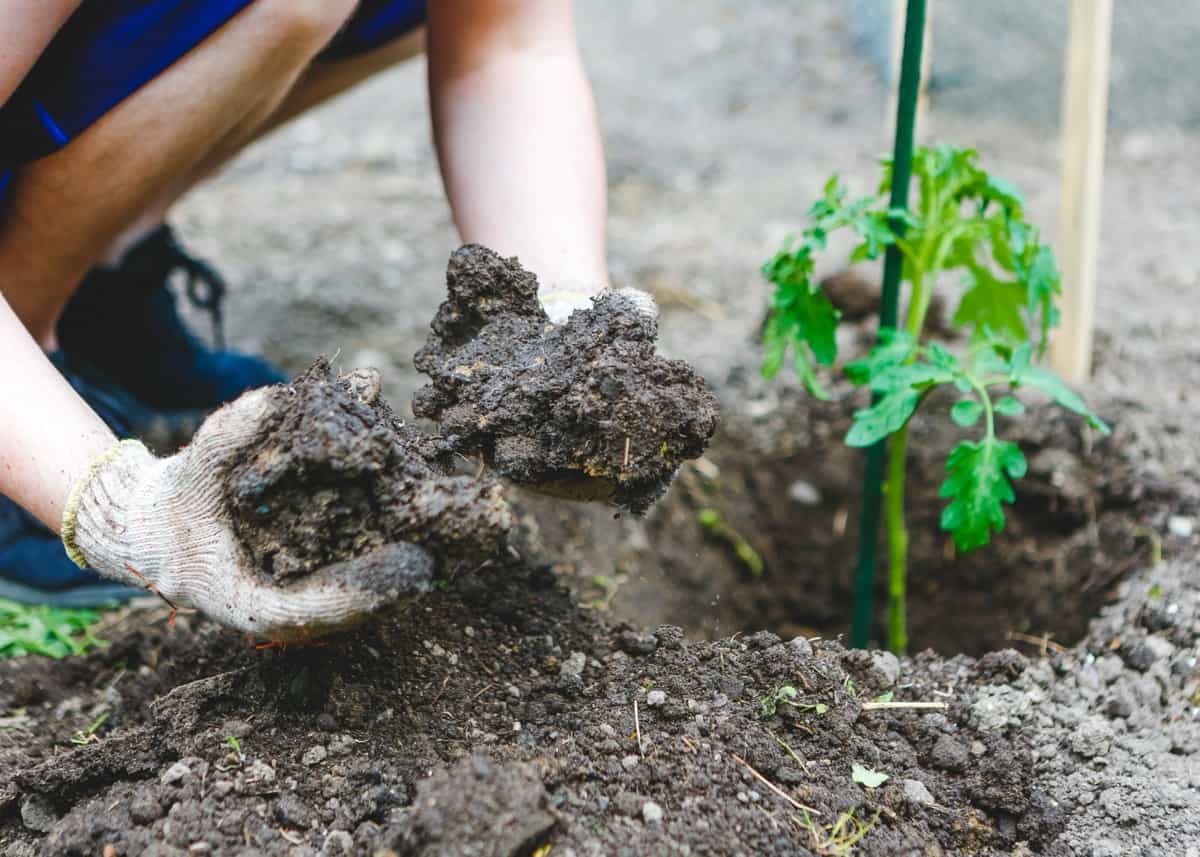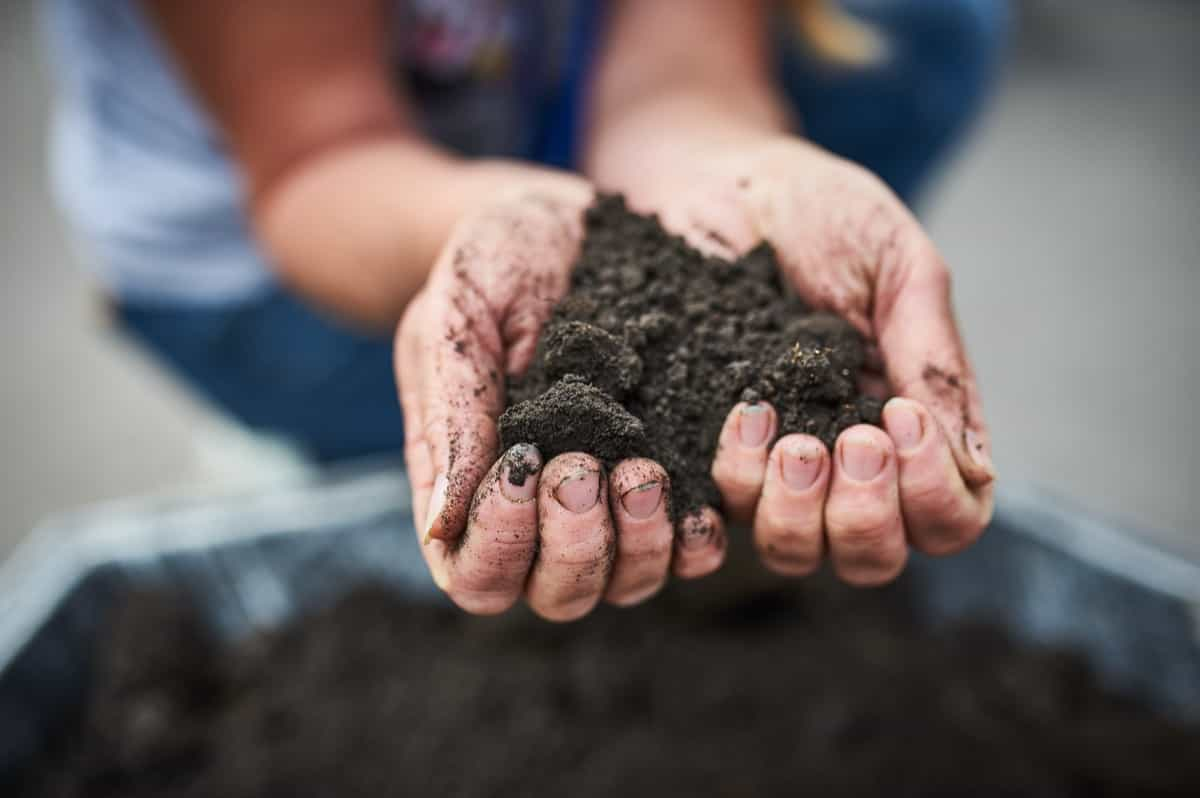Clay soil tends to have a high nutrient content. The fine particles and dense structure allow for better retention of essential minerals and organic matter. This means that plants growing in clay soil can often access a steady supply of nutrients, leading to healthier growth and more robust yields. In addition, heavy clay soil has excellent potential for improving fertility over time.

Tips for Growing with Heavy Clay Soil in Your Garden
Understanding Heavy Clay Soil: Characteristics and Challenges
The main characteristic of heavy clay soil is its ability to become easily compacted, leading to drainage issues. When wet, it becomes sticky and hard to work with, making it difficult for plants to establish their roots properly. This lack of proper root development can hinder plant growth and overall health.
The challenge posed by heavy clay soil is its tendency to retain excess moisture. While this may be beneficial during dry periods, excessive moisture retention can lead to waterlogged conditions that suffocate plant roots. Poor drainage in clay soils can also cause standing water after rainfall or irrigation. To overcome these challenges, amending the soil is crucial. Adding organic matter helps improve drainage by breaking up the compacted particles in the clay soil structure.
Amending Clay Soil: Improving Drainage and Structure
Clay soil tends to hold onto water, leading to soggy conditions that can drown plants’ roots. Additionally, when clay soil dries out, it becomes hard for plant roots to penetrate. The effective method is adding organic matter such as compost or well-rotted manure. Another technique is incorporating coarse sand or perlite into the soil mix. Furthermore, implementing raised beds is a popular solution for gardeners dealing with heavy clay soils. Raised beds provide better drainage by elevating the planting area above ground level.
Choosing the Right Plants for Clay Soil: Hardy and Tolerant Varieties
Clay soil can present challenges such as poor drainage, compaction, and limited nutrient availability. However, carefully selecting hardy and tolerant varieties can overcome these obstacles and create a beautiful garden. Also, choose plants known to tolerate or thrive in clay soils. Native plant species often have adaptations that make them well-suited to local conditions, including clay soils. Researching which native plants suit your region will help you find varieties naturally adapted to your specific climate and soil type.
In case you missed it: The Best Mulch Materials for Your Garden: A Guide of Right Mulch for Your Plants Based on Soil Type

Consider incorporating perennial flowers into your garden design, as they tend to be more resilient in challenging growing conditions like clay soil. Varieties such as Coneflowers, Black-Eyed Susans, Daylilies, Asters, and ornamental grasses provide pops of color while being able to withstand the heavy nature of clay soils. List of Plants that grow in clay soil are Heuchera, Hosta, Coneflower, Honeysuckle, Phlox, Geranium plant, Golden Rod, Bearded Iris, Lilac, Weigela, and Potentilla.
Implementing Raised Beds: A Solution for Clay Soil Gardens
Clay soil tends to retain water, causing it to become compacted and waterlogged. Excess water can drain away more efficiently by elevating the planting area in a raised bed, preventing root rot and other moisture-related issues. Raised beds control the soil composition within them. You can fill them with organic matter such as compost, well-rotted manure, and peat moss. This helps improve the structure and fertility of clay soil by adding nutrients and enhancing its ability to retain moisture without becoming overly saturated.
Mulching Techniques for Clay Soil: Retaining Moisture and Preventing Compaction
Mulching is a crucial technique for gardeners dealing with heavy clay soil. It serves two essential purposes: retaining moisture and preventing compaction. Some effective mulching techniques that can help you maximize the potential of your clay soil garden. Make sure to apply mulch when the soil is moist but not saturated.
This will allow it to lock in moisture while still allowing proper drainage. Avoid piling up excessive amounts of mulch directly against plant stems, which can lead to rotting. Furthermore, consider using landscape fabric underneath your mulch layer to prevent weed growth and erosion further. This will provide an additional barrier between the clay soil and external elements.
Proper Watering Practices: Balancing Moisture Levels in Clay Soil
Proper watering is crucial when balancing moisture levels in clay soil. The heavy nature of clay soil makes it prone to waterlogging and poor drainage, which can lead to issues for your plants. However, with the proper watering practices, you can ensure your garden thrives even in clay soil.
The critical watering practice is to water deeply but infrequently. A slow and steady watering approach is ideal for clay soil as it gives the water enough time to soak in without overwhelming its capacity. Watering early in the morning or late in the evening helps minimize evaporation and ensures that most of the water reaches plant roots rather than being lost to heat or sunlight.
Fertilizing Strategies for Clay Soil: Nutrient Management Tips
Clay soil tends to be nutrient-rich but can also become compacted, making it difficult for plants to access these nutrients. It’s essential to perform a soil test before adding any fertilizers. Organic fertilizers are great options for improving clay soils as they provide slow-release nutrients and improve the overall structure of the soil.
In case you missed it: Tomato Farming with Mulch: How to Use Organic Materials for Better Soil Health and Yield

Consider using liquid organic fertilizers instead of granular ones. Plants absorb liquid fertilizers easily and penetrate the dense clay particles more effectively. Consider using foliar feeding as an additional method of providing nutrients directly to plant leaves through sprays. This technique bypasses potential issues with poor root penetration in heavy clay soils and allows plants quick access to essential elements.
Implementing Organic Matter: Enhancing Soil Health and Structure
Adding organic materials such as compost, aged manure, or leaf mold can greatly enhance your soil’s health and structure. Organic matter acts as a sponge in clay soil, helping to improve drainage by creating pore spaces that allow water to move more freely. It also helps prevent compaction by loosening the dense clay particles, making it easier for plant roots to penetrate.
To implement organic matter effectively, spread a layer of compost or aged manure over your garden beds before planting. Use a garden fork or tiller to work it into the top few inches of soil. Repeat this process annually to maintain nutrient levels and overall soil health.
Managing Erosion in Clay Soil Gardens: Preventing Runoff and Soil Loss
Creating barriers such as retaining walls or terraces can help slow down the flow of water and prevent it from washing away precious topsoil. These structures add a visually appealing element to your garden and effectively aid against erosion. Another technique is implementing proper drainage systems. Incorporating organic matter into your clay soil can greatly enhance its ability to retain moisture and prevent erosion. By applying these practices in your garden, you can effectively manage erosion in clay soils while maintaining a healthy plant-growing environment.
Frequently Asked Aout Heavy Clay Soil in Your Garden
What Types of Plants Are Best Suited for Clay Soil?
Hardy and tolerant varieties are ideal for growing in heavy clay soils. Look for plants that thrive in moist conditions, such as Daylilies, Coneflowers, or Hostas.
Should I Use Raised Beds to Alleviate Issues with Clay Soil?
Raised beds can be an effective solution for gardening on heavy clay soils. They provide better drainage and allow you to control the soil quality within them.
How Can Mulching Help with Moisture Retention in Clay Soil?
Mulching helps retain moisture by creating a barrier between the sun’s rays and the ground surface, reducing evaporation rates and preventing compaction during rainfall events.
What Watering Practices Should I Follow When Dealing with Heavy Clay Soil?
Proper watering practices involve deeply saturating the root zone rather than frequent shallow watering, encouraging shallow root growth.
In case you missed it: How to Prepare the Soil for Dragon Fruit Cultivation

Is Fertilizing Necessary for Plants Growing in Heavy Clay Soils?
Fertilizing is essential to provide nutrients that may be lacking in your type of heavy clay soil; however, it’s important not to over-fertilize as this may lead to nutrient runoff into nearby water sources.
Conclusion
Heavy clay soil contains a high percentage of clay particles. The main characteristic of heavy clay soil is retaining water for extended periods. This can be both a blessing and a curse for gardeners. The main characteristic of heavy clay soil is its tendency to become easily compacted. The tiny particles in the clay tightly pack together under pressure from foot traffic or machinery, leaving little room for air circulation or root growth.
- Feed Your Flock for Less: Top 10 Tips to Save on Chicken Feed
- Ultimate Guide to Ossabaw Island Hog: Breeding, Raising, Diet, and Care
- Hatching Answers: The Top 10 Reasons Your Chickens Aren’t Laying Eggs
- Eggs and Economics: Breaking Down the Cost of Raising Backyard Chickens
- Defend Your Greens: Proven Methods to Keep Iguanas Out of Your Garden
- Ultimate Guide to Cinnamon Queen Chicken: A Comprehensive Guide for Beginners
- Ultimate Guide to California Tan Chicken: Breeding, Raising, Diet, Egg-Production and Care
- Ultimate Guide to Marsh Daisy Chicken: Breeding, Raising, Diet, and Care
- 10 Types of Chicken Farming Businesses You Can Start for Profits